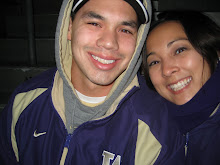Prior to beginning this course, I felt as though I had a pretty good understanding of how to effectively use today’s technology and internet resources to teach my students. After eight weeks of learning about many of the 21st century literacy skills, I realized there are specific teaching strategies that must be applied in order to successfully teach my students the skills they will need to really embrace the power of the internet. I think Maya Eagleton and Elizabeth Dobler explained it best when they stated, “…students need to be able to identify an information need, figure out which resources to use to address that need, evaluate the information they find, read and synthesize information from multiple sources, and perhaps even transform all those stray pieces of information into something original (Eagleton & Dobler, 2007, p. 1). Today’s students have the power to research and find any given topic with the simple click of a mouse. It is our jobs as educators to teach our students the most efficient and effective way to locate that information. On top of teaching our students how to search for information, it is just as important for today’s students to both question/evaluate the sources they are looking at. With the internet as an open source for anyone to post to, students must know the different aspects of a website that help to legitimize it and make it a reliable source of information.
As I worked through my inquiry-based project for this course, I began to analyze some of the teaching strategies I have used in the past and reflected upon some of the ways that I can improve my strategies to help promote the new literacy skills. I recently incorporated a new piece of technology into my classroom called an eBeam. This technology works similar to a SmartBoard in that it allows users to interact with the computer display on a standard whiteboard. Through the support of this class tool, I have started showing my students how to effectively search for a topic on the internet. We have had discussions about some of the different aspects of a website that help to prove whether or not it is a reliable or bogus site. I am hoping my students are able to take this skill and apply it to their own research projects.
One area that I would like to continue to develop and work on is effectively implementing inquiry-based projects. Prior to this course, I had minimal experience with using this type of teaching/assessment method. I would like to provide my students with more opportunities to use their questioning skills to help them search out the information they are seeking. I also would like to continue to broaden the types of technology projects my students can choose from. One project that I have not tried out with a class is incorporating podcasts. In order to teach this skill, I would first need to demonstrate to my students how to both create and post a podcast. The next step would be to make sure my school can provide some sort of recording tool such as a microphone/headset. With technology continuing to advance and change, it will be critical for me to stay current in my teaching strategies. As Dr. Douglas Hartman explained, “Our past was rooted in book culture. The future will be rooted in online and digital media” (Laureate Education, Inc, 2009). As I continue to try out new projects with my students, I plan to make sure they are exposed to each of the different literacy skills explored throughout this course.
Kevin Richstad
Reflection:
Eagleton, M. B., & Dobler, E. (2007). Reading the Web: Strategies for Internet inquiry. New York: The Guilford Press.
Laureate Education, Inc. (Executive Producer). (2009). Developing Students’ Digital Literacy. Baltimore: Author.



No comments:
Post a Comment